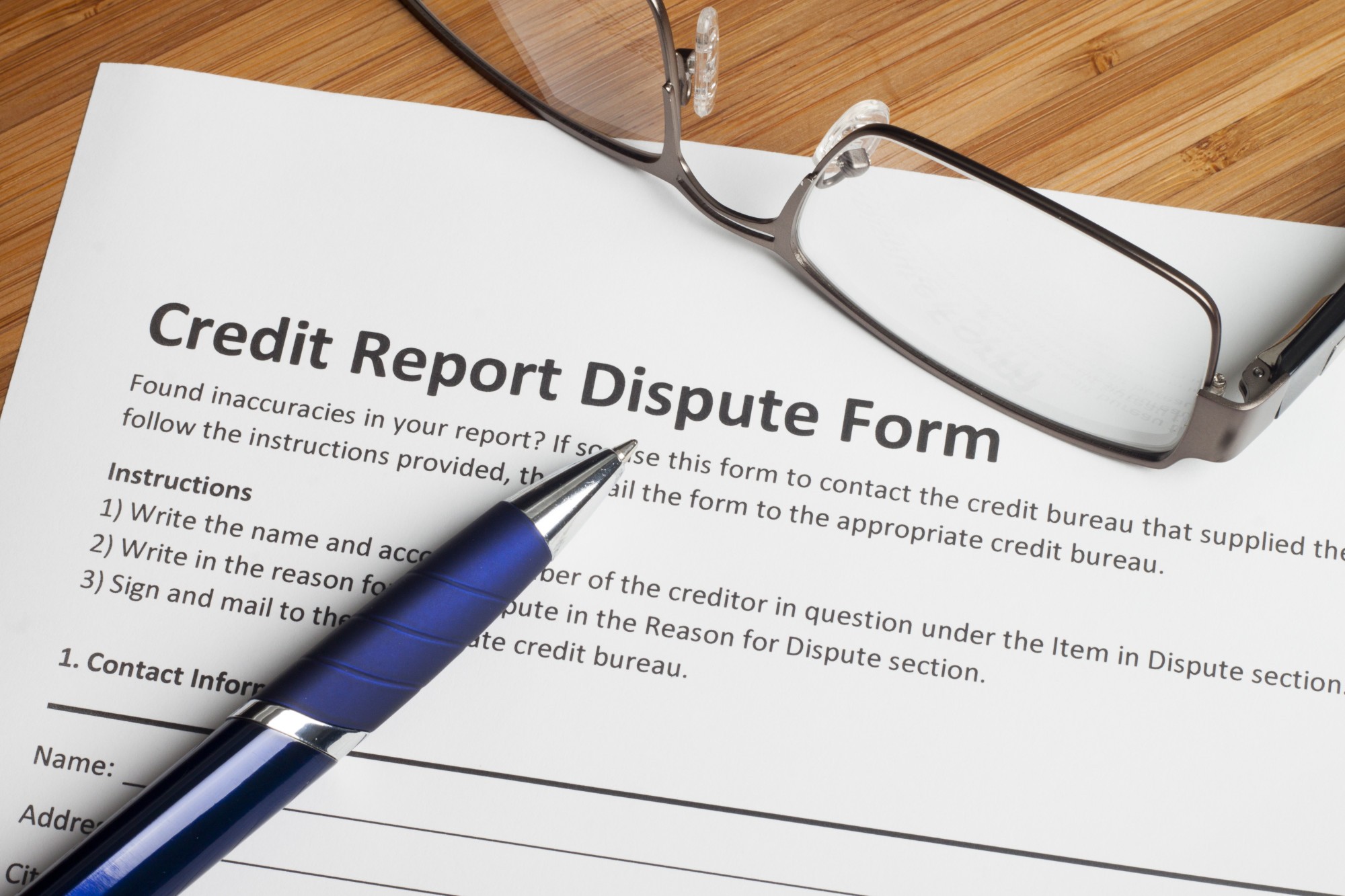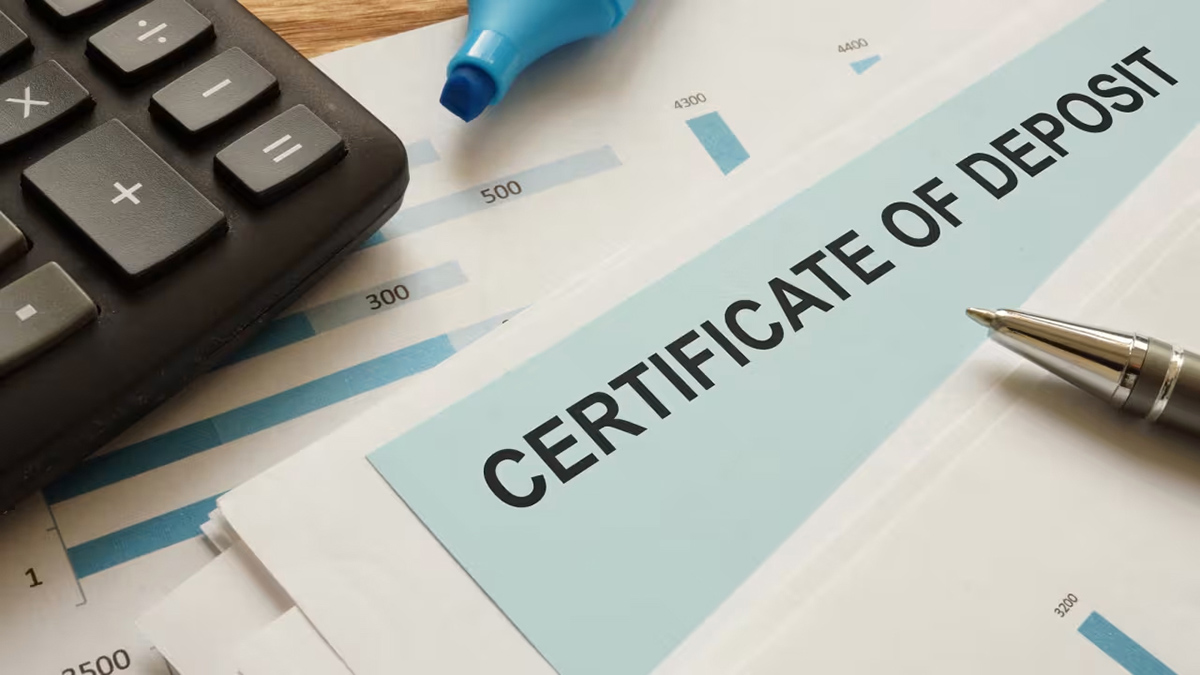

Finance
How To Remove Funds From Your Savings Account
Modified: December 30, 2023
Learn how to remove funds from your savings account and manage your finances effectively. Expert tips and guides on handling your finances.
(Many of the links in this article redirect to a specific reviewed product. Your purchase of these products through affiliate links helps to generate commission for LiveWell, at no extra cost. Learn more)
Table of Contents
- Introduction
- Step 1: Determine the purpose for removing funds from your savings account
- Step 2: Review withdrawal options and associated fees
- Step 3: Gather necessary documents and identification
- Step 4: Visit your bank or financial institution
- Step 5: Consult with a bank representative or financial advisor
- Step 6: Complete any required forms or paperwork
- Step 7: Confirm the withdrawal amount and receive funds
- Step 8: Update and monitor your savings account balance
- Conclusion
Introduction
Welcome to the world of personal finance! If you’ve reached the point where you’re considering removing funds from your savings account, it’s important to ensure that you have a clear understanding of the process and the factors involved. Whether you’re withdrawing funds for an emergency, a major purchase, or any other reason, having a solid grasp on the steps to take can make the process much smoother.
In this article, we will walk you through a comprehensive guide on how to remove funds from your savings account. We will also cover important considerations such as fees, required documents, and the impact on your account balance.
Before we dive into the steps, it’s essential to note that your savings account is designed for long-term savings goals. It is typically your safety net for unexpected expenses and future financial aspirations. Removing funds from your savings account should be a well-thought-out decision, balancing your present needs with your long-term financial goals.
With that in mind, let’s explore the step-by-step process of removing funds from your savings account.
Step 1: Determine the purpose for removing funds from your savings account
Before you proceed with removing funds from your savings account, it’s important to clearly identify and assess the purpose of the withdrawal. Understanding why you need the funds will help you make informed decisions throughout the process.
Start by evaluating the financial need or goal that prompts your decision. Perhaps you’re facing an unexpected medical or home repair expense, planning a vacation, or saving for a down payment on a new car. By defining the purpose, you can estimate the amount of funds required and evaluate the potential impact on your savings goals.
Consider the urgency of your need. Are you in a situation where you absolutely need the funds immediately, or can it wait? This will help you determine the appropriate withdrawal method and any associated fees.
Additionally, think about the potential consequences of removing the funds. Will it leave you with an inadequate emergency fund or hinder progress towards long-term financial goals? If so, you may want to explore alternative options before tapping into your savings.
Take the time to review your budget and assess whether there are any areas where expenses can be reduced. This may provide an alternative solution that allows you to preserve your savings and achieve your financial goals without the need for a withdrawal.
By carefully considering the purpose and urgency of removing funds from your savings account, you can make an informed decision that aligns with your financial aspirations and minimizes any unnecessary impact on your long-term goals.
Step 2: Review withdrawal options and associated fees
Once you have determined the purpose for removing funds from your savings account, it’s time to explore the different withdrawal options available to you. Every financial institution may have its own set of rules and regulations regarding withdrawals, so it’s important to familiarize yourself with the options and associated fees.
Firstly, check if your savings account allows for online or mobile banking withdrawals. This convenient option allows you to transfer funds directly from your savings account to another account, such as your checking account, or even to an external account held with a different bank. Keep in mind that there may be limits on the amount you can transfer per day or per transaction.
If online or mobile banking is not available or doesn’t meet your needs, consider visiting a branch of your bank or credit union in person. The advantage of this withdrawal method is that you can receive the funds in the form of cash or a cashier’s check, providing immediate access to the money. However, it’s important to inquire about any associated fees, as some financial institutions charge for certain types of in-person withdrawals.
Another option to explore is using an ATM to withdraw funds. Many banks have a network of ATMs where you can access your savings account. You can withdraw cash or opt for a transfer to another account. Be sure to check if there are any fees associated with ATM withdrawals, especially if you use an ATM outside of your bank’s network.
Some savings accounts may also offer the option of writing a check against your savings balance. However, this is less common and may be subject to specific restrictions or fees, so it’s important to check with your financial institution for details.
As you consider the available withdrawal options, be mindful of any associated fees. While some banks offer free withdrawals for certain methods, others may charge fees for various services. Take into account the potential impact these fees may have on the amount you intend to withdraw, especially if you’re making a smaller withdrawal.
By reviewing the withdrawal options and associated fees, you can choose the most suitable method for accessing the funds from your savings account while minimizing any additional costs.
Step 3: Gather necessary documents and identification
Before you proceed with the actual withdrawal from your savings account, it’s essential to gather the necessary documents and identification to ensure a smooth and efficient process.
Typically, you will need to provide proof of your identity and your account ownership. This helps protect your account from unauthorized access and ensures that the funds are being withdrawn by the account holder.
When it comes to identification, a valid government-issued identification card such as a driver’s license, passport, or national identification card is generally accepted. Make sure your identification document is not expired and contains accurate information that matches the details associated with your savings account.
In addition to identification, you may also need to provide your account information, such as your account number or debit card linked to your savings account. This helps the bank or financial institution verify your account details and facilitates the withdrawal process.
If you’re withdrawing funds in person at a branch, it’s advisable to bring a copy of your account statement or any other supporting documentation that confirms your account ownership. This can help resolve any discrepancies or concerns that may arise during the transaction.
Keep in mind that the specific documentation requirements may vary depending on your financial institution and the withdrawal method you choose. To avoid any surprises or delays, it’s best to contact your bank or review their website to understand their specific requirements.
By gathering the necessary documents and identification ahead of time, you can streamline the withdrawal process and ensure a hassle-free experience when removing funds from your savings account.
Step 4: Visit your bank or financial institution
Once you have prepared the necessary documents and identification, it’s time to visit your bank or financial institution to proceed with the withdrawal from your savings account. This step is crucial as it allows you to directly interact with the bank representative and complete the necessary transaction.
Before heading to the bank, it’s advisable to check their operating hours to ensure that you have ample time to complete the withdrawal without feeling rushed. You can typically find this information on the bank’s website or by contacting their customer service.
When you arrive at the bank, proceed to the customer service or teller counter and let them know that you would like to withdraw funds from your savings account. Depending on the withdrawal method you’ve chosen, the bank representative will guide you through the necessary steps.
If you are withdrawing funds in person at a branch, the bank representative will typically require your identification and any supporting documentation you have gathered to confirm your account ownership. They may also ask for your account number or debit card associated with the savings account.
During this interaction, it’s important to stay vigilant and protect your personal and account information. Ensure that you are speaking with an authorized bank representative and avoid sharing sensitive information with anyone who cannot provide proper identification or doesn’t appear to be an employee of the bank.
If you have any questions or concerns during your visit, don’t hesitate to ask the bank representative for clarification. They are there to assist you and ensure that the withdrawal process goes smoothly.
By visiting your bank or financial institution in person, you can be confident that your withdrawal transaction is handled securely and efficiently. It also provides an opportunity for you to address any inquiries or issues directly with the bank representative, ensuring a satisfactory resolution.
Step 5: Consult with a bank representative or financial advisor
While visiting your bank or financial institution, it can be beneficial to take the opportunity to consult with a bank representative or a financial advisor. This step is especially important if you have any questions or concerns about the withdrawal process or if you would like professional guidance before making any major financial decisions.
A bank representative can provide you with valuable information about the withdrawal options available to you and help you understand any associated fees or restrictions. They can also clarify any specific policies or procedures related to your savings account that you may not be aware of.
If you have multiple savings accounts or investment accounts, a financial advisor can offer helpful insights on the potential impact of making a withdrawal from your savings account. They can assess your overall financial situation, goals, and risk tolerance to provide personalized advice and guidance.
Consulting with a financial advisor can also help you evaluate alternative options that may be more appropriate for your specific financial needs. They can address any concerns regarding the potential consequences of the withdrawal and suggest strategies to minimize any negative impacts.
Additionally, a financial advisor can assist you in reviewing your long-term financial goals and help you determine if the withdrawal aligns with your overall financial plan. They can provide guidance on the best ways to balance your present financial needs while preserving your savings for the future.
Remember, the decision to remove funds from your savings account can have long-term implications, so it’s essential to make informed choices. Consulting with a professional can provide you with a fresh perspective, expert advice, and peace of mind as you navigate through this process.
Take advantage of the expertise and insights of bank representatives or financial advisors to ensure that your withdrawal aligns with your financial goals and helps you make the most of your savings.
Step 6: Complete any required forms or paperwork
When removing funds from your savings account, it’s important to complete any required forms or paperwork as instructed by your bank or financial institution. These forms are necessary to document and process the withdrawal transaction and ensure accurate record-keeping.
The specific forms or paperwork required may vary depending on the withdrawal method and the policies of your bank. Some common examples include withdrawal request forms, transfer authorization forms, or withdrawal slip forms.
If you are making the withdrawal in person at a branch, a bank representative will guide you through the process and provide you with the necessary forms. Take the time to carefully read and fill out the forms, providing accurate information regarding the withdrawal amount, account details, and any other required fields.
Ensure that you understand the terms and conditions mentioned in the forms, including any disclosure statements or disclaimers. If you have any questions or concerns, don’t hesitate to ask the bank representative for clarification before signing the forms.
If you are making an online or mobile banking withdrawal, the process may involve completing the necessary steps through the bank’s digital platform or application. Follow the on-screen instructions, provide the requested information, and review the details before confirming the withdrawal.
By completing the required forms or paperwork accurately, you ensure that the withdrawal transaction is properly documented and processed by the bank or financial institution. This helps maintain accurate records of your savings account activity and ensures transparency in your financial transactions.
Keep copies of any forms or paperwork related to the withdrawal for your own records. These documents will serve as proof of your withdrawal and can be helpful for future reference or in the event of any discrepancies.
By taking the time to complete any required forms or paperwork, you contribute to a smooth and organized withdrawal process that adheres to the policies and procedures of your bank or financial institution.
Step 7: Confirm the withdrawal amount and receive funds
After completing the necessary forms or paperwork, it’s time to confirm the withdrawal amount and receive the funds from your savings account. This step is crucial in ensuring that you receive the intended amount and that the transaction is accurately processed.
If you are making the withdrawal in person, the bank representative will verify the details provided on the forms and confirm the withdrawal amount. They may ask you to review the information for accuracy before proceeding with the transaction.
Once the withdrawal details are confirmed, the bank representative will initiate the process of providing you with the funds. This can be in the form of cash, a cashier’s check, or a direct transfer to another account. If you have a specific preference, such as receiving smaller denomination bills or a specific type of check, don’t hesitate to communicate your preference to the bank representative.
If you are making an online or mobile banking withdrawal, you will typically have the opportunity to review the details of the transaction before confirming it. Take the time to double-check the withdrawal amount, the receiving account information, and any associated fees before proceeding. Once confirmed, the funds will be transferred according to the instructions you provided.
During this step, it’s important to keep a record or receipt of the withdrawal transaction. This serves as proof of the amount withdrawn and can be reconciled with your account statement to ensure accuracy.
Remember, it’s always a good practice to count the cash received or review the details of the cashier’s check or transfer receipt to ensure they align with the intended withdrawal amount. If you notice any discrepancies, bring them to the attention of the bank representative immediately for resolution.
By carefully confirming the withdrawal amount and receiving the funds, you can conclude the withdrawal process with confidence, knowing that the funds have successfully been disbursed from your savings account. Be sure to store the funds securely or deposit them into the intended account to prevent any loss or misuse.
Step 8: Update and monitor your savings account balance
Once you have completed the withdrawal from your savings account, it’s essential to update and monitor your account balance to stay informed about the impact of the withdrawal on your overall finances.
First, update your savings account balance to reflect the withdrawal. If you are using online or mobile banking, log into your account and navigate to the savings account section. Enter the withdrawal amount and ensure that the balance displayed accurately reflects the remaining funds in your account.
If you are updating your balance manually or using a check register, subtract the withdrawal amount from the previous balance and record the updated amount. This will help you keep track of your savings and accurately manage your finances.
Monitoring your savings account balance is crucial for several reasons. It allows you to assess the impact of the withdrawal on your financial goals and evaluate whether adjustments in your saving strategy are necessary. It also helps you maintain accurate records and provides a clear picture of your current financial situation.
Regularly checking your savings account balance also helps you detect any unauthorized transactions or errors that may occur. If you notice any discrepancies, contact your bank immediately to resolve the issue and ensure the security of your funds.
In addition to monitoring your balance, it’s important to continue managing your savings effectively. If you removed funds from your savings account for a specific purpose, such as an emergency or major purchase, consider developing a plan to replenish the withdrawn amount over time. This will help you maintain your savings momentum and stay on track with your financial goals.
Make it a habit to review your overall financial plan periodically. Assess your budget, savings goals, and investment strategies to ensure they align with your current needs and aspirations. Regular financial check-ins help you make informed decisions and stay proactive in managing your money.
By updating and monitoring your savings account balance, you remain in control of your financial situation and can make necessary adjustments to maintain a healthy financial trajectory.
Conclusion
Removing funds from your savings account is a significant decision that requires careful consideration and planning. By following the step-by-step guide outlined in this article, you can navigate the process with confidence and ensure that you make informed choices that align with your financial goals and needs.
Start by determining the purpose for removing funds from your savings account, evaluating the urgency of your need, and considering the potential consequences. Review the withdrawal options available to you, taking note of any associated fees, and gather the necessary documents and identification.
Visit your bank or financial institution, consult with a bank representative or financial advisor if needed, and complete any required forms or paperwork. Once everything is in order, confirm the withdrawal amount and receive the funds, ensuring accuracy and secure handling of your finances.
Finally, update and monitor your savings account balance, making sure to stay vigilant for any unauthorized transactions or discrepancies. Continue managing your savings effectively, considering strategies to replenish the withdrawn funds and regularly reviewing your overall financial plan.
Remember, your savings account is an important tool for achieving your financial goals and providing a safety net for unexpected expenses. While removing funds may be necessary at times, it’s crucial to maintain a balance between present needs and long-term aspirations.
By following the steps outlined in this guide and staying proactive in managing your savings, you can make the most of your finances while preserving the foundation of your financial well-being.














